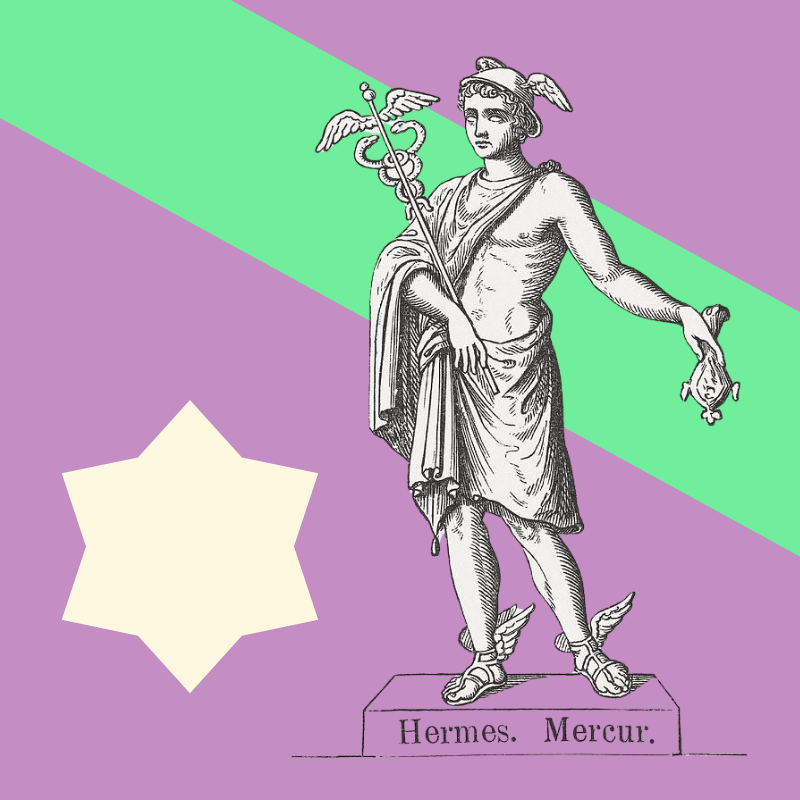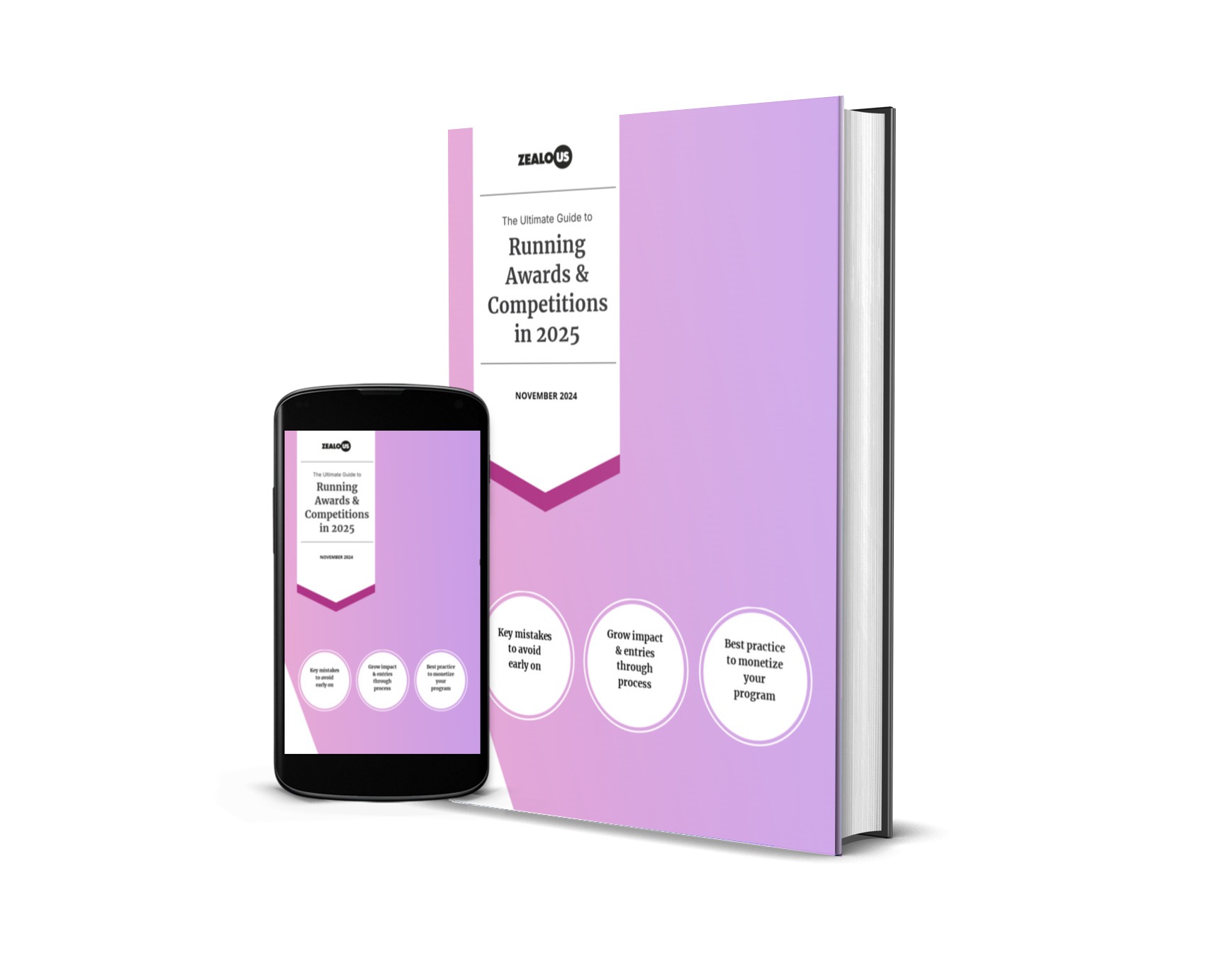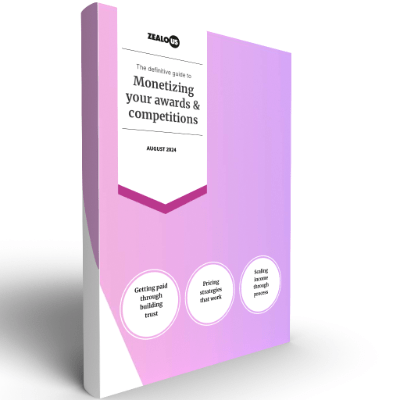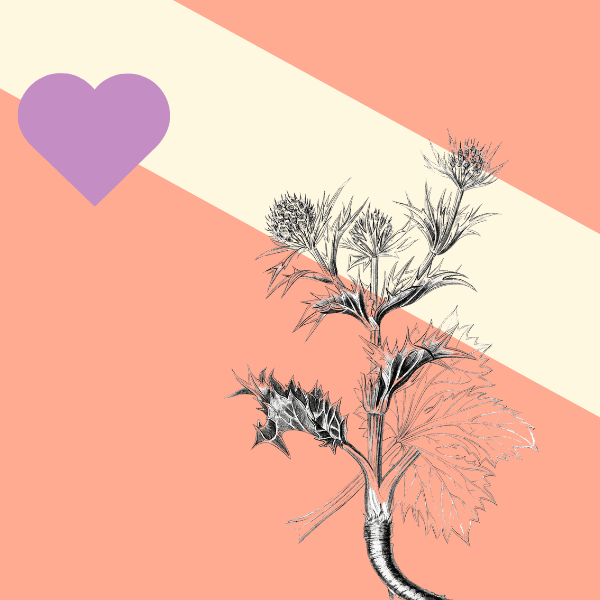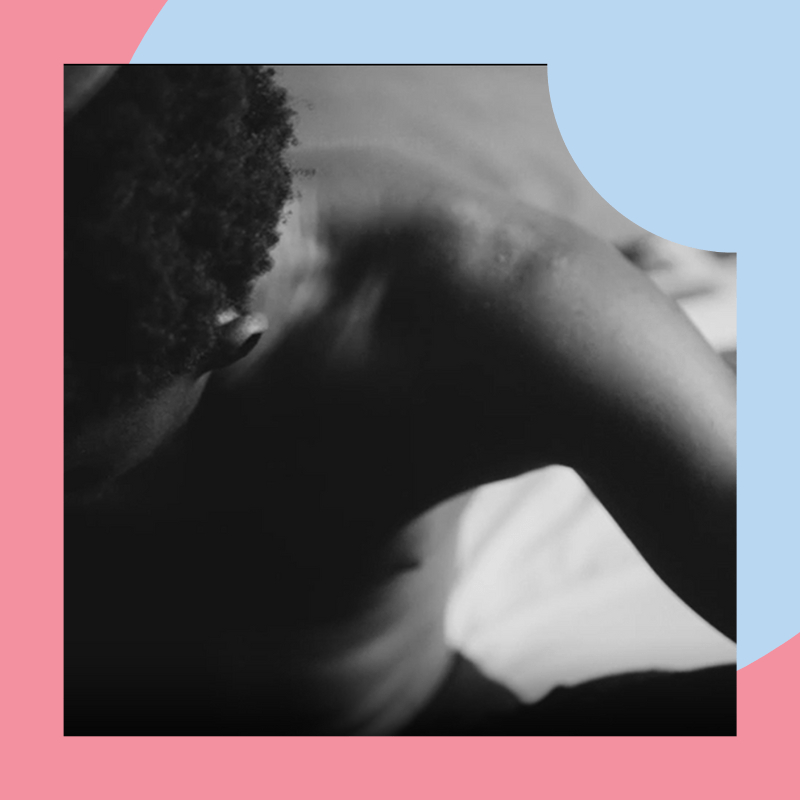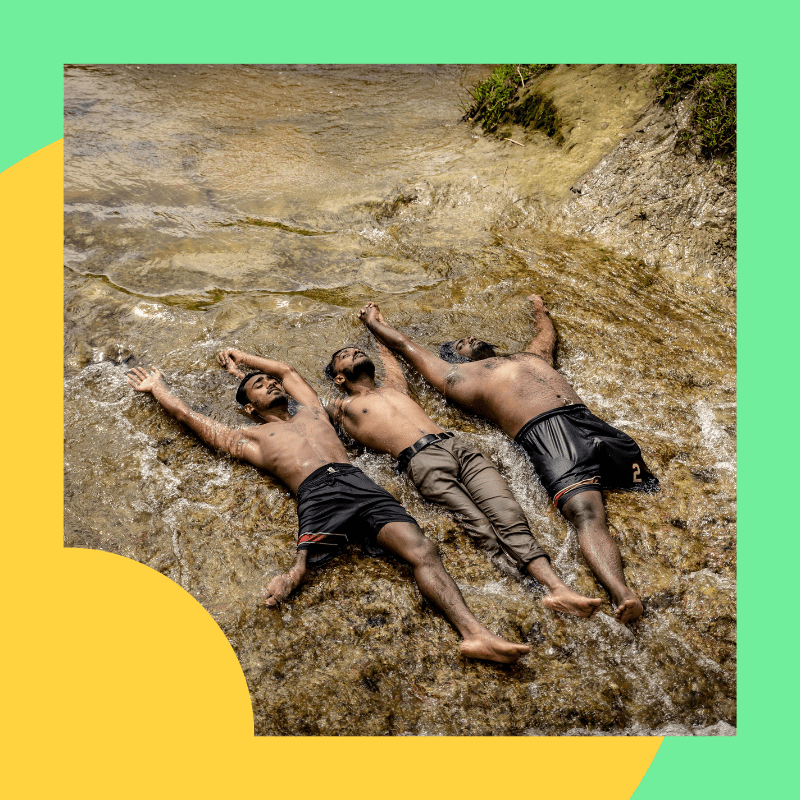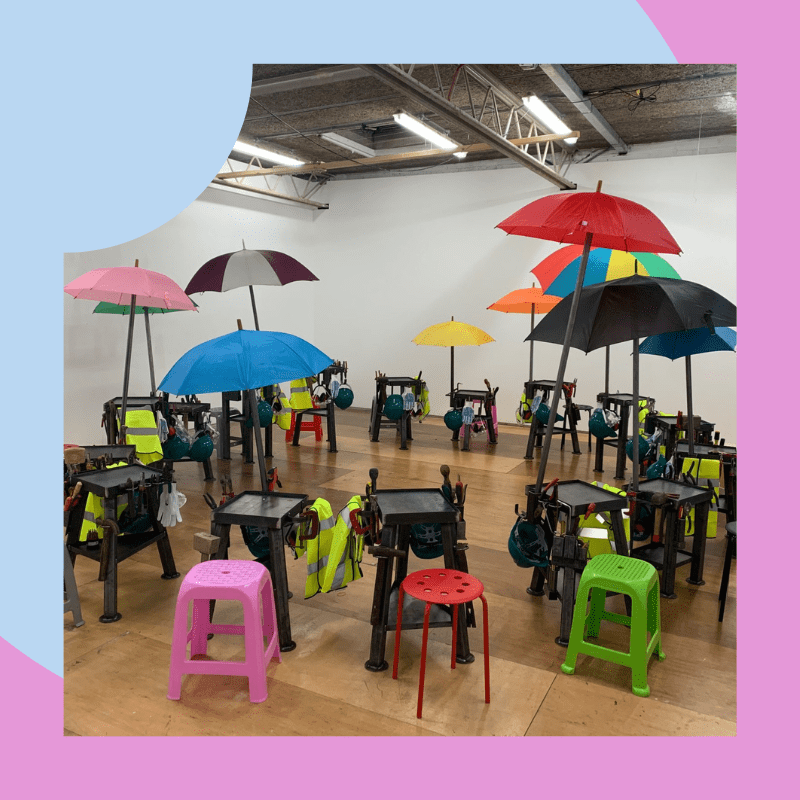The multidisciplinary creative and filmmaker has carved out a distinctive space in contemporary cinema, focusing her experimental approach on subjects that challenge conventional narratives about identity, heritage, and innovation.
Her latest documentary project takes viewers deep into Uganda’s vibrant creative scene, following a visionary designer who is revolutionizing fashion by reimagining his ancestral textiles. Through Allchurch’s experimental documentary style, audiences witness a fascinating cultural fusion as traditional Ugandan fabric techniques meet contemporary hip-hop aesthetics, creating something entirely new that speaks to both heritage and future possibility.
Congratulations on winning first place for Zealous Amplify: Future! What does your creative process look like?
This is my first documentary film project, so In all honesty I am still exploring and finding my creative process, it very much evolved throughout the project and a lot of the time based on gut feeling. For this project, it started with connection and friendship. The creative process sparked from these imitate and inspiring conversations between Katende and myself that challenged systems through joy, creativity and community. After 2 years of friendship and working with Katende on other projects, we eventually began building a team for the film, working with Ugandan creatives. It wasn’t always straight forward and it took a few attempts until we found a solid team. These changes impacted the creative process as it meant there was a lot of change at the beginning. But I learnt from this experience that extensive research is integral to having smooth creative process in film and in some ways to not rush the process, especially when starting to shoot.
My creative process has been very influenced by the energy of the team I worked with and also as Katende as a creative himself, I wanted the frameworks of how the film was made to mirror that of the person I was documenting, I think that I have a lot more to learn in terms of doing this, especially in film where non-hierarchical approaches to production can be challenging.
You say your practice is centred around Bell Hook’s idea of ‘beloved community’. What does this mean to you?
Bell Hooks: beloved community-to me is a foundational principle guiding how I move through creative space. At its core, beloved community in my practice centres love, harmony, and unity. It is inclusive and non- hierarchical and always comes back to the community I am working with. In my filmmaking practice, this looks like working with local teams that reflect the communities being documented, maintaining long-term commitment to each other throughout the process, creating space for creative input from every team member, and ensuring the community remains actively involved in both the film’s distribution and accompanying events. I know that I am still exploring how to embody these principles in my work, and you know I feel this also comes with de-centering certain frameworks I have been surrounded by growing up in a Western world, but right now I am guided by the belief that collaboration when done right is a powerful tool for
change.
I think that when a film genuinely honors this principle locally, this energy and feeling transmute into a global audience, as they feel this authenticity and connection. I hope that this is the impact of the film with IGC as I believe that through this approach, that collectively we find the strength, power and courage to challenge and disrupt the harmful hegemonic narratives that are still rooted in colonial and imperialistic ways of thinking.
Your piece is in collaboration with Katende Godfrey. How did you start working together?
Katende and I met in 2022, I was visiting East Africa and it was at a music festival in Jinja that a friend and I saw someone wearing this beautiful garment, it looked like leather but it was earthy and it was embedded with beautiful intricate details and fabrics. We went up to her and asked where this was made. She said this designer lived in Kampala and so as soon as we got back to the city, we went to find his studio. It took us an hour to try and locate it, unfamiliar at this time with the bumpy backroads of the city moving by boda. Eventually, we found it after very nearly giving up. I ended up spending 3 hours in his studio just chatting about his work, our beliefs and challenging the norms. Since then we have worked on multiple different projects, putting on music events linking fashion, dance and the dancefloor to raise funds and awareness for the IGC fashion residency he is building in Kazo and to create links between other creative communities in London and Cape town (where I was living at the time). He knew that I wanted to work in film and so one day we agreed we would do this – I don’t think either of us realised the journey we were about to embark on together. But what I do know is that Katende is the type of person that when he sees your intention and your commitment, he welcomes you in as family no matter where you come from.
In all honesty, I really thought this project was going to be much smaller as this was. But after I really began to sit down and have long chats with him through the perspective of sharing his story with the world, I really understood the justice that this film needed to bring to his work, and how powerful the message embedded in his practice is.
Yes it may seem like a crazy thing to do, and it really felt like it at points, but it was Katende’s courage, patience and discipline to go towards what he once feared as a self-taught designer that gave me the strength to keep going when I was really at my lowest. In this sense as well a lot of my creative process has just been about trusting the process. We had a lot of conversations at the beginning about my involvement as a British citizen in the film and telling his story, but at the end of the day, he told me it comes down to trust, energy and timing. I see my involvement in the film as getting his work into spaces that he might not have been able to access alone, sharing access to resources and networks.
What do you want people to take away from your work?
I hope that people feel curious after this, I hope it sparks a seed that encourages viewers to do their own research, to think critically and dive into challenging what we consume physically and spiritually, to break out of our echo chambers and to go to the source of where our information comes from. I hope that it shifts the approach to how we consume clothes, showcasing how fashion is far from something that is physical or surface level, it is more than just trends, about buying what is in season. It is a very powerful force and a tool to awaken- the main piece of IGC’s collection that is showcased in this work is the Gugumuka piece, which means to “Wake up”.
I encourage people to reach out for collaborations with Katende, to continue the research for sustainable alternatives in the fashion industry that centre around honouring local craftsmanship and cultural heritage. I hope people feel inspired by Katende’s journey and invest in the campaigns IGC are launching this year- including the first fashion residency in Uganda, their Mutuba tree planting campaign and Fashion Cypher programmes.
These are the conversations
we need more of
Read more interviews from creatives that remind you why building a creative career is worth it, even when it’s hard.
How has this project shifted your perspective of the future?
This project has fundamentally shifted how I see the future, both as a filmmaker and as a person. When you really allow yourself to be vulnerable and step out of your comfort zone, there’s so much room for growth and transformation.
Growing up in London, I often felt unsettled by the individualistic, consumerist, and capitalistic ways of being that surrounded me. I’ve always been drawn to challenging myself to question the norms and ways of thinking we’ve been brought up on, and this project really deepened that. Working with creatives like Kibuuka Mukisa, our DOP, Josh Albiet, our editor, and Jeff Kenneth has been transformational for my perspective as a filmmaker- so big shout out to them. Learning from people who’ve been in the industry for so long taught me so much about craft and collaboration.
But what really shifted my perspective was witnessing how sustainability isn’t just an isolatedaspect of life – it’s a complete way of being. Through Katende’s work, seeing the energy, stories, and meaning embedded in every garment he carefully crafts, I was challenged to completely rethink how I consume. It made me prioritize meaning over quantity, focus on upcycling, and really consider the full lifecycle of my clothes.
Looking toward the future, I’m focused on continuing to build my filmmaking skills while working to get the film screened in Uganda, South Africa, and the UK. There’s still so much work to be done, and we’re hoping to generate income from the film so Katende can continue his impactful work. That feels like the real measure of success to me.
What role do you see creativity playing in building a hopeful future, and how does your practice reflect this?
As James Baldwin said art is a way to “make the world a more human dwelling place”. Creativity allows us to envision alternatives to present conditions before they exist materially, to create spaces where transformation seems possible, too bear witness to injustices in a way that statistical data cannot. Creativity provides space for us to express and listen to our most authentic self in order to radically imagine and take action creating a world that is aligned with mother nature, and our own inner nature. Creativity serves as a place of building community, for collective healing and as a means to honor ancestral knowledge and intergenerational wisdom. It centres creating with rather than for communities affected by harmful systems. In this way, creativity is essential to creating a dismantling and re-imagining new way of life.
You can find more about Hannah’s project here.

Bethan Jayne Goddard
Want us to write more content like this? Give it a like
Share

